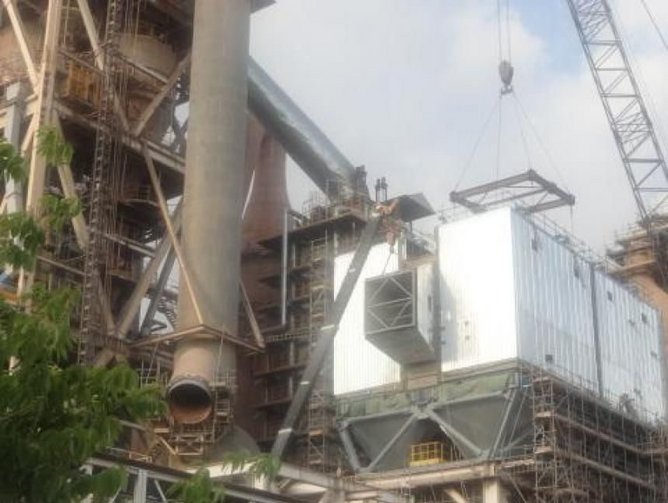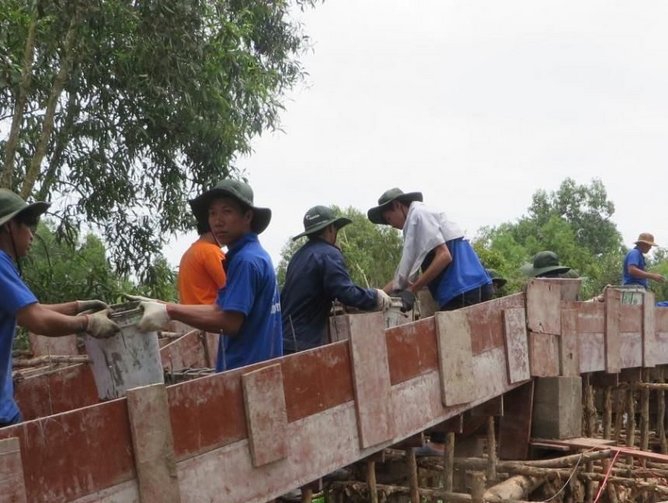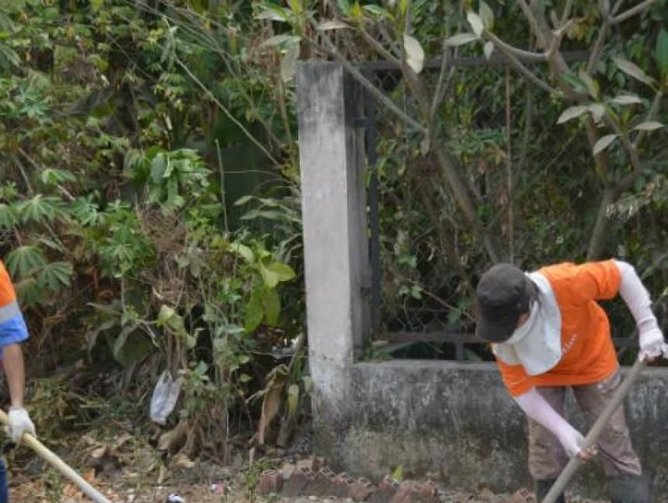The leading supplier of cement and readymix in southern Vietnam, LafargeHolcim has a presence in 90 countries and is a world-wide leader in the building materials industry.
But the company’s top priority isn’t only profit. Holcim Vietnam (HVL) is striving to balance its triple bottom line with economic growth, environmental performance and social responsibility.
With initiatives such as “Together for Environment” and “Together for Communities,” HVL intends to increase environmental awareness and improve the society we live in.
“With a commitment of driving sustainable solutions for better building and infrastructure, as well as contributing to a higher quality of life, Holcim is positioned to meet the challenges of increasing urbanization,” said Holcim Vietnam sustainable development director Nguyen Cong Minh Bao.
History
A member of LafargeHolcim Group, Holcim Vietnam employs about 1,300 people at its six main sites — including the head office at the Continental Tower (Ho Chi Minh city) and five plants at Hon Chong, Cat Lai, Thi Vai, Hiep Phuoc and Nhon Trach.
The group has 115,000 employees worldwide, acting as the industry benchmark in R&D for the biggest and most complex projects. It maintains the widest range of value-adding products, innovative services and comprehensive building solutions, with core values revolving around health and safety.
Following its core values: CRISP (Customer, Results, Integrity, Sustainability, Performance), with health and safety overarching all, HVL’s approach to creating value is based not only on economic performance, but on the environmental and social aspects of its operation.
In short, the company’s “triple bottom line” of economic, environmental and social is critical in helping the company reach its business goals and maintain its licenses to operate.
Sustainability
Since the manufacturing of cement involves extensive exploitation of non-renewable resources such as limestone and clay, environmental performance is a significant part of Holcim’s business strategy.
Holcim implemented its "Together for Environment" program in 2009 to cover all activities aimed at reducing the company’s environmental footprint. The program also includes green manufacturing and environmental performance monitoring, as well as raising awareness of environmental protection for employees and the community.
The Geocycle Vietnam business unit has played a big role in achieving such great sustainable development. The waste management solution not only benefits the environment, but also helps enhance companies’ reputations and its ability to achieve sustainability goals. Additionally, Geocycle complies with all Vietnamese laws and regulations on such matters as well as Holcim’s own relevant standards.
“The initiative is based on the fortuitous circumstance that, along with producing clinker, a cement kiln is a very environmentally friendly place in which to dispose of waste,” said Nguyen Cong Dong, Geocycle Director.
With the cement industry developing technology to use waste products as substitutes for traditional fuels such as coal or natural gas, Geocycle is a highly efficient process that helps reduce carbon emissions of cement plants and leaves no residue.
“The continuing successful partnerships between Geocycle and its customers will not only result in cleaner production, but also contribute to improving the overall quality of life for society, as it moves ever-closer to a zero-waste environment.”
Social responsibility
As part of the Holcim’s “Together for Communities” initiative, a wide range of activities have been used to meet objectives. Most of these actions are administered specifically to improve the quality of life of Holcim’s employees and their families, as well as the communities surrounding its operations.
The initiative shows Holcim’s commitment to becoming a trusted partner of the community, and also creates a platform and vehicle for voluntary participation by different stakeholders and employees in social activities to develop a sustainable development mindset.
According to Nguyen, Holcim believes these investments help improve the quality of life and sustainability of the communities where it has a presence. The company focuses on community development, infrastructure development and education promotion. In order to truly create prospering communities, Holcim is dedicated to working together with schools, nonprofit organisations, stakeholder groups and its own employees.
Innovation
Holcim has earned its reputation by delivering commercially superior solutions to their customers while installing state-of-the-art equipment and processes to ensure the most efficient manufacturing, with significant attention being paid to environmental protection.
In its mission toward sustainability, Holcim focuses on limiting the environmental footprint of its production, specifically in regards to energy and water usage for producing each ton of cement.
With a commitment to make major investments in the latest technologies, Holcim intends to develop an energy-efficient culture within its staff by embedding energy efficient habits of consumption into their daily work.
This will be accomplished by upgrading current equipment to reduce the volume of electrical and thermal energy used, substituting fossil fuels with alternative fuels to generate fewer CO2 emissions and using mineral components in all products to preserve the quality expected by its customers.
One of Holcim’s largest investments is the company’s Waste Heat Recover (WHR) Power plant, which has been operating since 2012. The steam-cycle plant is among the first in Vietnam to use heat from the production process to generate electrical energy.
The plant uses two waste heat sources: a kiln preheater exhaust and a clinker cooler exhaust. Since the WHR plant meets 25 per cent of the plant’s electricity requirements, it takes pressure off the national grid supply and significantly reduces CO2 emissions by an estimated 25,000 tonnes per year. This provides massive benefits to the environment, economy and society as a whole.
Some of the company’s other investments include using a Vertical Roller Mill (VRM) to reduce energy consumption in cement production, installing bag filters to reduce dust emissions and perfecting co-processing technology in Hon Chong cement plant. Using co-processing in cement kiln technology, Holcim developed its operation using considerable investments in new technology for its co-processing actions at the Hon Chong cement plant.
These innovations didn’t happen overnight, but instead came about through small, incremental changes initiated by Holcim’s goal of continuous improvement. This has led to Holcim receiving several national and international certificates, including ISO 9001, ISO 14001 and OHSAS 18001.
“At Holcim Vietnam, continuous improvement is not only the task of constantly seeking out ways to improve processes, products or services, but also is considered a business strategy,” said Nguyen. “In over 20 years of operation, we have achieved a lot of important national and international certificates and have used them as crucial measurement criteria to streamline and improve our daily operations while maintaining consistency and quality.”
Talent management
Holcim instills a commitment to health and safety in everything it does.
The company’s “Zero Harm” plan has a goal of conducting business without having any injuries, while creating a safe and healthy environment for employees, contractors, visitors and communities.
“This is how we intend to make a difference in the way we work, in our business and communities,” said Nguyen.
In order to achieve this, Holcim maintains a global health and safety management system designed to continuously improve performance and manage risk. It also establishes a culture of safe execution through targeting operational discipline and communicating with all stakeholders on relevant issues.
With a strong belief that employee development is a key aspect of a company’s success, Holcim has created several programs to help its workers at every level perform to their best ability.
Holcim’s three key programs of Enterprise Vocational Education (EVE), Junior Engineer Trainees (JET) and Graduate Development Program (GDP) have supplied a strong knowledge base for first-level management employees.
Along with other training programs such as Leadership and Supervisory Development, as well as the company’s Coach the Coach (CTC) program, Holcim’s soft skill training methods have been created to help employees improve their problem-solving skills and ability to handle difficult customers.
“We are making every effort to continue our investment in developing and retaining our people,” said Nguyen. “We therefore believe in building a committed workforce that has each and every employee contributing their best to the organisation.”
Ahead of the rest
Constant change in the world and in the industry brings new challenges for the construction and building materials sectors, such as demographic growth, increasing urban development, climate change and environmental preservation.
Holcim addresses these trends through providing spaces to live and learn, places to rest and work, infrastructure that facilitates mobility, along with innovations that maintain energy supplies.
“These are the main missions of building materials, particularly those of cement, aggregates, and concrete solutions,” said Nguyen. “In providing what really matters, we will set the standard for the industry as a whole.”
Holcim’s sustainability approach capitalizes on LafargeHolcim’s global presence of providing solutions towards meeting social, environmental and stakeholder challenges, with a goal of creating shared value with society.
“Holcim Vietnam not only provides innovative cement, aggregates, ready-mix concrete products as well as associated services and solutions, but also develops sectorial offerings tailored to their specific needs,” said Nguyen. “Thus, we use our operational excellence to supply our customers efficiently, sustainably, and safely.
“With our professional teams, assets, technologies, and strong manufacturing processes, our clients can trust the quality and the consistency of our products and solutions. We are setting the standard for the building materials industry.”














